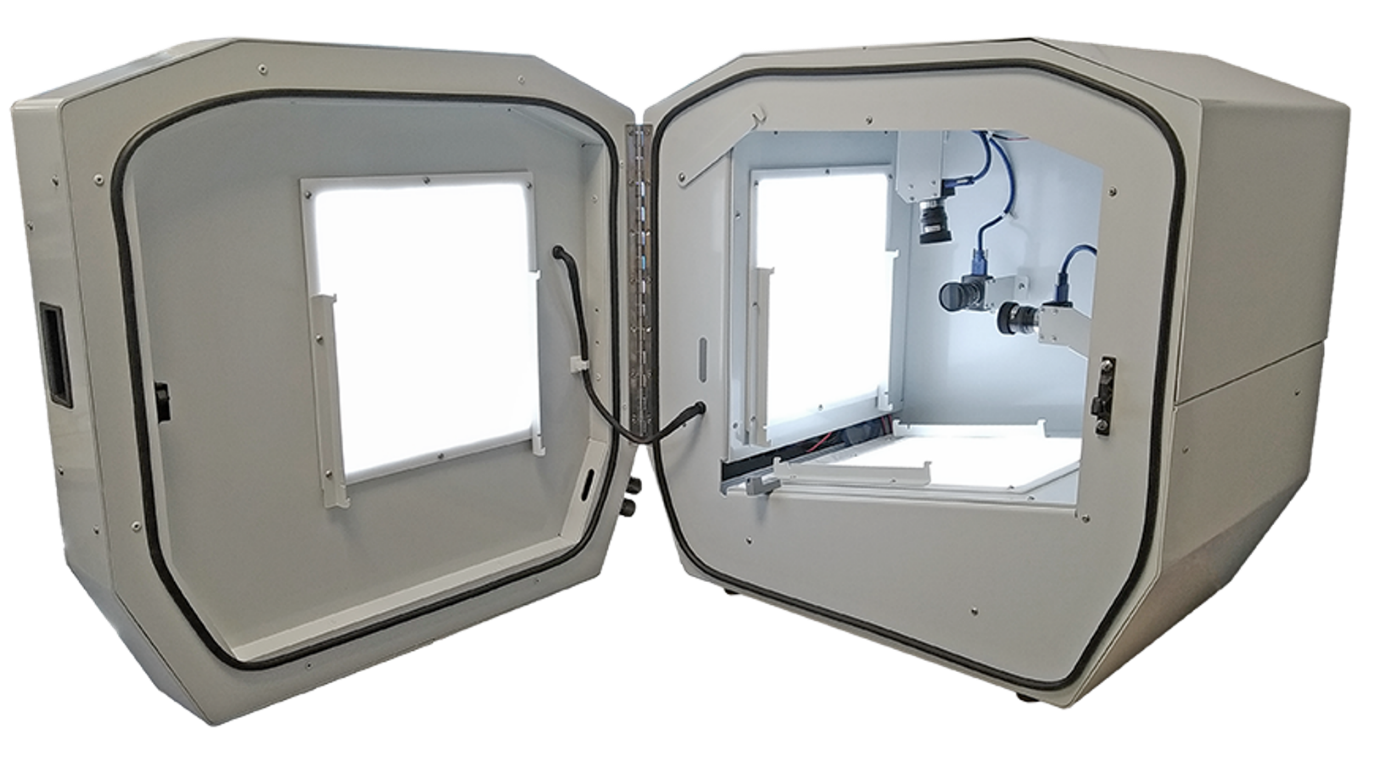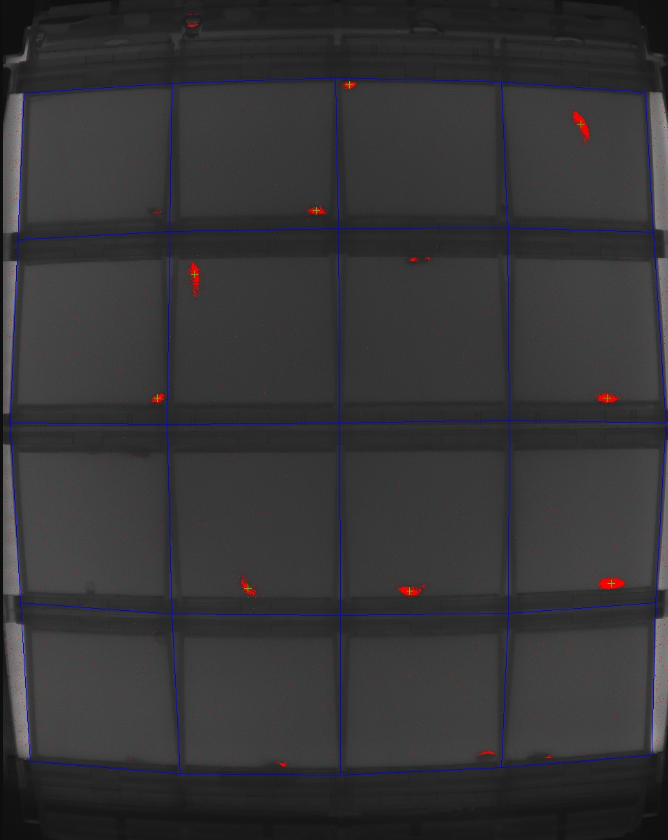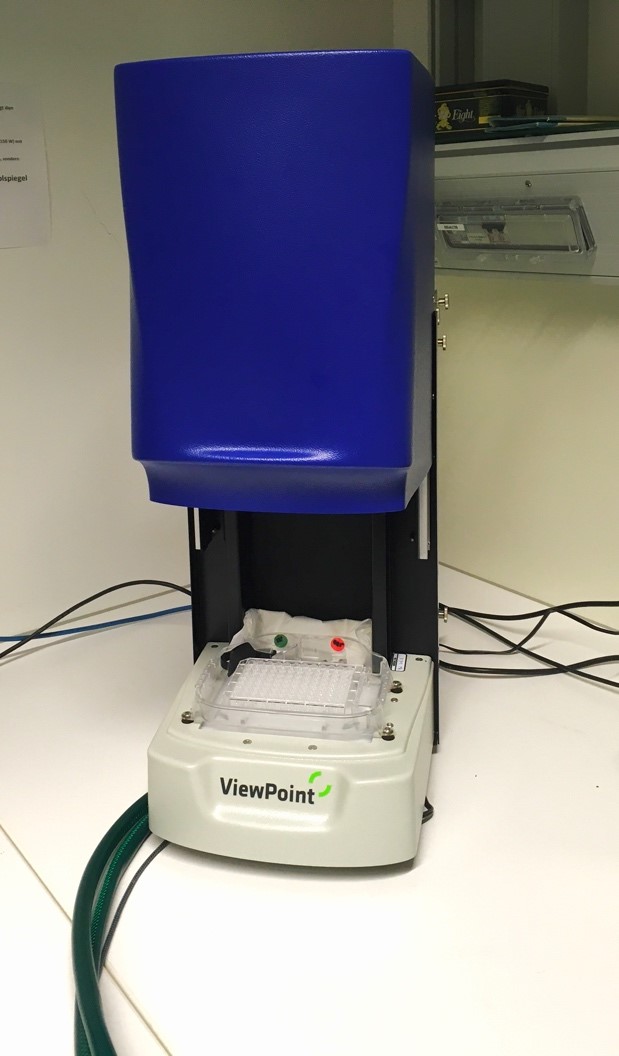Behavioral endpoints become increasingly more relevent in ecotoxicological research. Here we want to present our behavioral research using two unique tools from ViewPoint Behavioral Technology.
Behavioral research using the Toxmate LAB
To establish a method with a new tool requires motivation, stamina, communication, good collaboration and a certain amount of creativity. With the help of the producing company ViewPoint Behavioral Technlogy, we, the very first institution in Germany, have the unique opportunity to establish a novel state-of-the-art tool in behavioral research, the ToxmateLAB (Figure 1).

Figure 1: ToxmateLAB by ViewPoint Behavioral Technology
The ToxmateLAB is a new device specifically designed for 24/7 online behavior monitoring under high throughput conditions. The integrated computer provides remote access. Three infrared cameras allow the optical measurement of test organisms' movement even in the dark, while built-in LED panels make a simulation of night and day rhythms possible. The ToxmateLAB provides space for 48 invertebrates and the technical design allows for chronic exposure experiments with a total duration of 30 days. Treatments can be aqueous or gaseous. The experimental design's primary endpoints is the observed locomotion activity, which is considered a sublethal endpoint. It is measured as total distance moved or total time of activity.
Our aim here at E3T is to develop standardized methods for the ToxmateLAB. The first tasks of working with the new device included getting to know the system, setting the initial configurations, and adapting the test design to the experment's specific requirements and the test organisms. As the ToxmateLAB is in an early phase of establishment in laboratories, many expected and unexpected challenges have to be kept in mind considered on the roadway to building an appropriate experimental setup. Everything needs to be figured out in detail, from the right tubing, vessels, and pumps to the correct installation of a cooling curcuit.
There are two approaches the device can be used for depending on the user's field of interest. An ecological approach can answer fundamental research questions about invertebrate behavior. Secondly, an ecotoxicological approach may be addressed to investigate the effects of single substances or chemical mixtures on different organisms' activity and, consequently, predict observed results in a broader context. Our first initial experiments covered both approaches. They implied the use of varying water temperatures and light settings to see the effects on primitive behavior and an additional caffeine treatment to investigate the impact of a substance of an anthropogenic source.
The upcoming projects with ToxmateLAB are bachelor, master and Ph.D. theses following a more ecotoxicological approach by investigating the effects of micropollutants such as pharmaceuticals and pesticides, which are often biologically active at concentrations within the µg-range.

Figure 2: Gammaridea monitoring using the ToxmateLAB software
Behavioral research using the ZebraBox
With the 4th generation of the ZebraBox, our lab is equipped with the latest state-of-the-art monitoring device for high-throughput behavioral analyses of fish larvae.
The system allows fully automated tracking of larvae in 6-, 12-, 24-, 48-, and 96-well plates over user-tailored time courses and illumination schemes. The testing environment can be controlled by different light settings and a continuous water-flow around the micro-well plate to provide stable and standardized test-conditions, not only in acute exposures but also in long-term monitoring experiment. Furthermore, the ZebraBox is designed to minimize the influence of compromising external conditions, such as sound and vibration from the surrounding environment.
To control the set-up of experiments, the ZebraBox comes with ViewPoint's ZebraLab Software Suite. This software enables the user to create experimental regimes in which up to 96 individual larvae can be tracked simultaneously. Additionally, the software is compatible with additional equipment, like the ZebraCube or the ZebraTower and also allows to run multiple ZebraBoxes in parallel.

Figure 3: ZebraBox by ViewPoint Bevioral Technology
- Aktuelles und Presse
- Pressemitteilungen
- Öffentliche Veranstaltungen
- Uni-Publikationen
- Aktuelles Jahrbuch
- UniReport
- Forschung Frankfurt
- Aktuelle Stellenangebote
- Frankfurter Kinder-Uni
- Internationales
- Outgoings
- Erasmus / LLP
- Goethe Welcome Centre (GWC)
- Refugees / Geflüchtete
- Erasmus +
- Sprachenzentrum oder Fremdsprachen
- Goethe Research Academy for Early Career Researchers
- Forschung
- Research Support
- Forschungsprojekte, Kooperationen, Infrastruktur
- Profilbereich Molecular & Translational Medicine
- Profilbereich Structure & Dynamics of Life
- Profilbereich Space, Time & Matter
- Profilbereich Sustainability & Biodiversity
- Profilbereich Orders & Transformations
- Profilbereich Universality & Diversity




